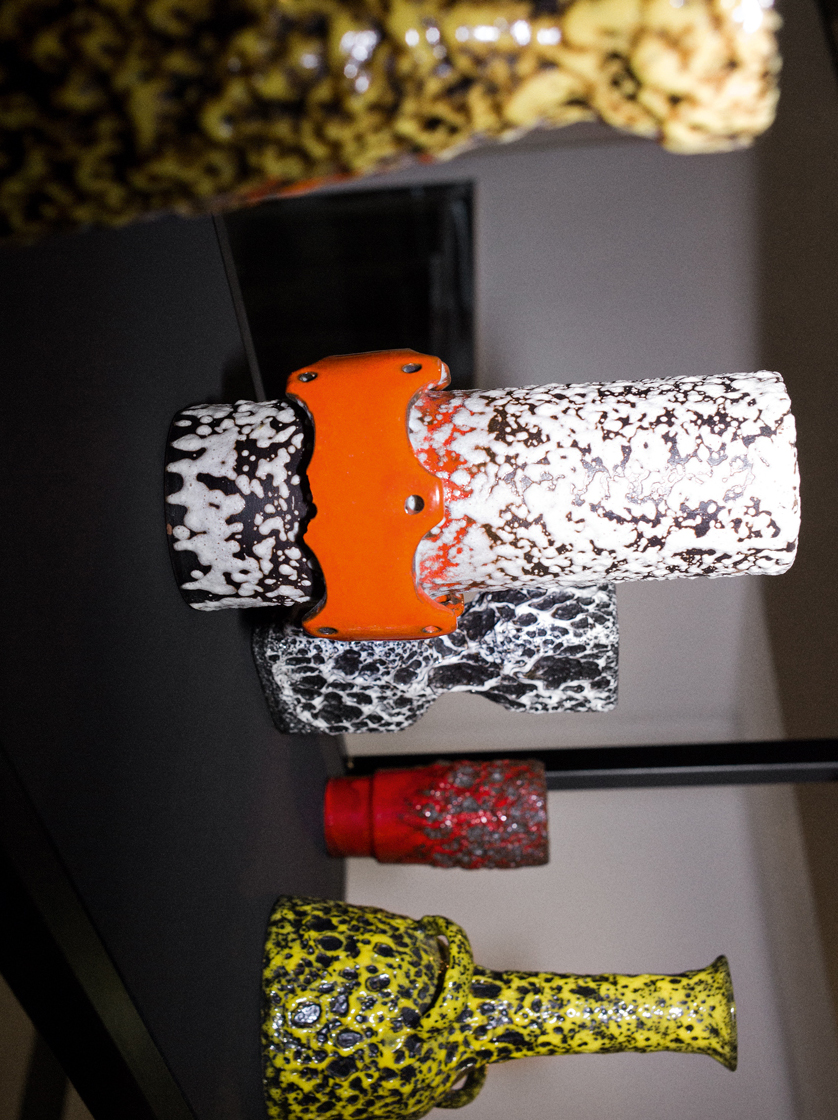Purple Magazine
— F/W 2012 issue 18
Nicolas Trembley’s Ceramics
from kitsch to art — the ascension of NICOLAS TREMBLEY’s Ceramics Collection
interview and photography by OLIVIER ZAHM
When asked to participate in an art exhibition, the curator Nicolas Trembley offered a vase he’d purchased on eBay for under 100 euros, setting it on a shelf. Before he knew it he was asked to show in one exhibition after another. Nicolas collects kitsch German ceramics from the 1960s to the 1980s, mostly from two companies: Sgrafo and Fat Lava. He knows their history and writes about them for the exhibitions. Their value, under his intervention, has increased dramatically. Nicolas doesn’t claim to be an artist, but he has played an instrumental role in the transformation of the kitschy vases he likes and collects into artworks. Then again, isn’t the transformation of artifacts into objets d’art something that the world decides? We were curious.
OLIVIER ZAHM — How did you…
